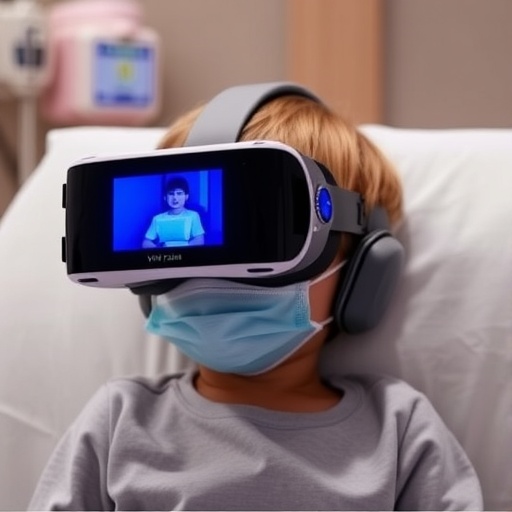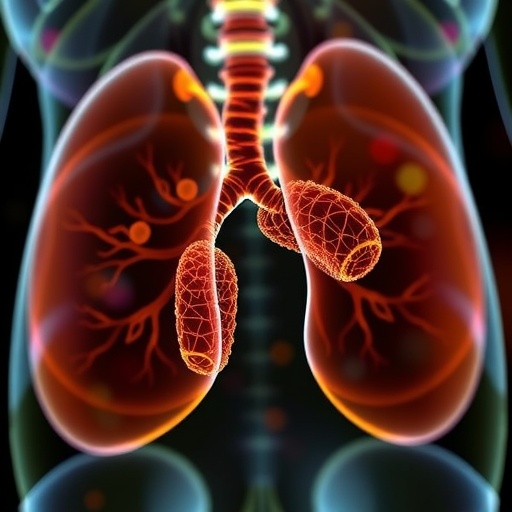In an era where technology is rapidly transforming the landscape of healthcare, a novel approach has emerged that could redefine how we manage pediatric surgical experiences. A recent study by Shen et al. delves into the impactful role of preoperative virtual reality (VR) in alleviating anxiety, mitigating pain, and enhancing postoperative recovery among children undergoing circumcision. This innovative use of immersive technology provides a fresh perspective on pediatric sedation and pain management, garnering attention from medical professionals and parents alike.
The study was meticulously designed, targeting a crucial aspect of pediatric surgery—the psychological and physical discomfort that children often face. Traditionally, surgical procedures can be daunting for young patients, leading to heightened levels of anxiety, which can, in turn, exacerbate postoperative pain and prolong recovery. This investigation, hence, sought to explore whether immersing children in a VR environment prior to surgery could markedly alter their preoperative and postoperative experiences.
At the heart of the research was a randomized controlled trial involving a substantial cohort of pediatric patients. Participants were divided into two groups: one experienced VR sessions before their surgeries, while the other received standard preoperative care. The VR content was specifically curated to be engaging yet calming, focusing on serene and imaginative environments designed to distract from the surgical setting. The aim was clear: to utilize VR as an effective distraction tool that could lower anxiety levels and transmit a sense of normalcy to the surgical experience.
As children donned their VR headsets, qualitative assessments were conducted by clinicians to gauge the impact of this sensory alteration. Findings revealed a noteworthy drop in anxiety levels in the group exposed to VR. The implications of this decrease in anxiety cannot be overstated. Reduced anxiety not only fosters a more positive mindset before entering the operating room but also significantly influences pain perception post-surgery, leading to lower reported pain levels and a quicker return to routine activities.
The study meticulously documented pain levels through a series of well-validated assessment tools. Reports showed that children who experienced the VR sessions required less analgesia postoperatively than their counterparts in the standard care group. This points toward an exhilarating possibility of using VR not only to enhance emotional well-being but to also substantively diminish reliance on pharmacological pain management—an appealing prospect in an age where the opioid crisis looms large.
As recovery was monitored over subsequent days, researchers noted that the children who had undergone VR intervention experienced a more swift and uncomplicated recovery trajectory. They were able to resume their normal daily activities sooner and reported less overall discomfort in the postoperative phase. This promising trend has far-reaching implications for surgical practices, heralding a potential paradigm shift towards integrating advanced technology in patient care strategies.
Moreover, the social dynamics of pediatric surgery play a critical role in shaping outcomes. Children often feed off the emotions of their caregivers, and a calm child can make for a less anxious parent. This study’s findings suggest that VR could provide a dual benefit—improving not only the child’s experience but also easing the emotional burden carried by family members. This newfound tool could elevate the collective experience surrounding pediatric surgeries.
One of the most exciting aspects of Shen et al.’s research is the potential for VR to serve as a model for other surgical procedures beyond circumcision. The application of VR can be tailored to various medical contexts, including dental surgeries, outpatient procedures, and even those requiring general anesthesia. The possibility of reducing anxiety and pain on a wider scale opens discussions around the versatility of VR technology in clinical settings.
In conclusion, the findings from this rigorous study present compelling evidence supporting the introduction of VR as a beneficial adjunct in the preoperative phase for children. By minimizing anxiety, alleviating pain, and expediting recovery, the application of VR could redefine pediatric surgical care practices. As healthcare continues to evolve, the integration of immersive technologies like VR represents a forward-thinking approach that prioritizes patient comfort and outcomes.
This groundbreaking research not only elevates the potential of virtual reality within medical environments but also paves the way for future exploration of technology-driven strategies in healthcare. Further studies will undoubtedly expand upon these findings, solidifying VR’s place in the toolkit of surgical care providers striving to enhance the experiences of their youngest patients. Such innovations portray a promising future where technology and compassionate healthcare practice coexist harmoniously, ensuring that the anxiety and pain often associated with surgery are mitigated, allowing young patients to embark on their recovery journeys with optimism.
Subject of Research: The effect of preoperative virtual reality on anxiety, pain, and postoperative recovery in children undergoing circumcision.
Article Title: The effect of preoperative virtual reality on anxiety, pain and postoperative recovery in children undergoing circumcision.
Article References:
Shen, L., Mei, C., Wang, H. et al. The effect of preoperative virtual reality on anxiety, pain and postoperative recovery in children undergoing circumcision.
BMC Pediatr 25, 940 (2025). https://doi.org/10.1186/s12887-025-06308-x
Image Credits: AI Generated
DOI: https://doi.org/10.1186/s12887-025-06308-x
Keywords: Virtual reality, pediatric surgery, anxiety management, pain management, postoperative recovery.
Tags: enhancing surgical experiences for childrenimmersive technology in healthcareinnovative approaches to pediatric sedationmodern technology in pain reliefpain management techniques for pediatric patientspostoperative recovery improvementspreoperative care for childrenpsychological impact of surgery on childrenrandomized controlled trials in medicinereducing anxiety in children during surgeryvirtual reality in pediatric surgeryVR therapy for anxiety reduction





